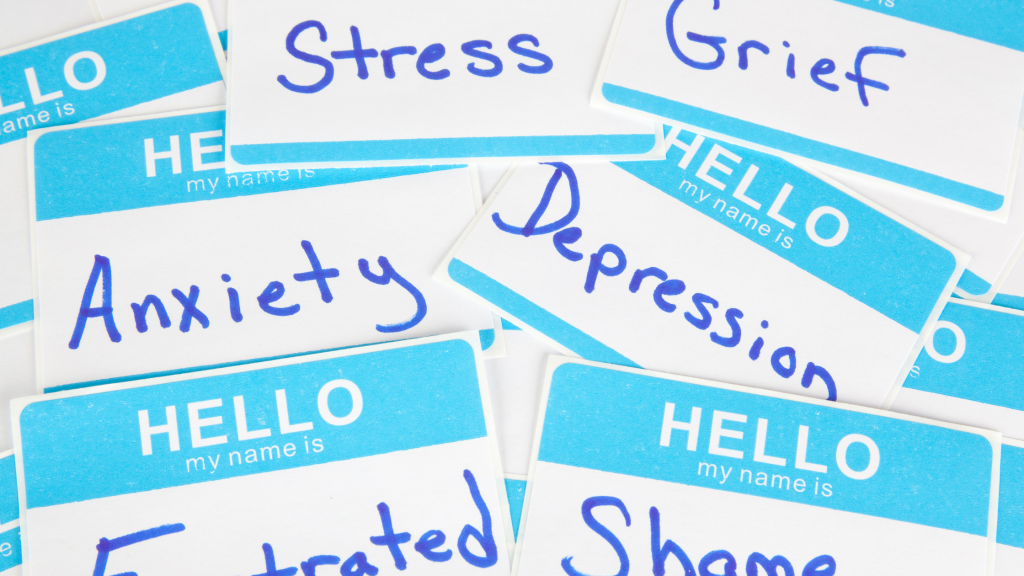

You would think that as the most digitally connected and informed, Millennials and Gen Zers would be the most upfront about their mental health and wellbeing. According to the Deloitte Global 2021 Millennial and Gen Z Survey, both generations report high stress and anxiety levels – and remain hesitant about expressing their stress and anxiety to their peers or employers. Gen Z is poised to be the most stressed, anxious and depressed (the most isolated) generation of all time. The top 3 mental health issues reported by both generations are anxiety, depression, and eating disorders.


There is still a stigma about mental health, and the only way we can get rid of it is by educating ourselves. Here is how we can help identify the different mental health issues (please seek professional advice, especially if you are experiencing any of the following, below):
Anxiety is the leading mental health condition today. How do we know if it is an anxiety disorder or a feeling of anxiousness? How do we differentiate between the two? According to Heretohelp.com, normal anxiety lasts as long as the situation or problem, while anxiety disorder might not be related to any specific situation.
Anxiety
Anxiety Disorder
Below are some of the most common types of anxiety disorders:
Generalized Anxiety Disorder (GAD): Involves constant, severe anxiety that interferes with day-to-day activities.
Obsessive-Compulsive Disorder (OCD): Experience intrusive and unreasonable thoughts, fears, and obsessions that lead to repetitive behaviors and compulsions.
Panic Disorder: Characterized by constant fearfulness and frequent, sudden attacks of terror and panic.
Post-Traumatic Stress Disorder (PTSD): PTSD usually develops after someone experiences or witnesses a traumatic event. It is also possible for individuals to experience trauma without suffering a major catastrophic event.
Social Anxiety Disorder: This mental health condition manifests as irrational anxiety, fear, self-consciousness, and embarrassment in everyday social interactions.
We have felt sadness to some degree, but do we know if our emotional state is one that might require seeking medical or professional help?
What is the difference between situational depression and clinical depression?
Situational depression is a short-term form of depression, an emotional state that occurs after a person experiences a traumatic event or change in their life. It usually occurs within 90 days (about 3 months) after the event. It is considered an adjustment disorder while clinical depression is considered a mood disorder. If recovery from situational disorder does not occur within a few weeks, then clinical depression may develop.
Symptoms can include:
No type of depression is more “real” than the other.
According to the America Psychiatric Association, depression (major depressive disorder) is a common and serious medical illness that negatively affects how you feel, the way you think and how you act. Symptoms must last at least two weeks and must represent a change in your previous level of functioning for a diagnosis of depression.
Depression symptoms can vary from mild to severe and can include:
Also, medical conditions (e.g., thyroid problems, a brain tumour or vitamin deficiency) can imitate symptoms of depression so it is important to rule out other causes with a medical exam.
Eating disorders affect people of all backgrounds; genders, ages, races, religions, ethnicities, sexual orientations, body shapes, and weights.
There are different ways to identify eating disorders – emotional and behavioural and physical symptoms. While there are different types of eating disorders, here are some common symptoms to look out for:
Emotional & Behavioural
Physical
It is important to be aware of and understand how we are feeling emotionally, mentally, and physically. As people, it is crucial that we have our own circles or communities that we can rely on – which is why it is important to also look out for our family and peers – extend a hand if they might be in need as it can make all the difference.
Click here if you are interested in learning and understanding more about mental health and psychology.
Sources:
https://psychiatry.org/patients-families/depression/what-is-depression
https://www.medicalnewstoday.com/articles/314698#diagnosis
https://www.nationaleatingdisorders.org/warning-signs-and-symptoms
https://www.nationaleatingdisorders.org/warning-signs-and-symptoms
The goal of a diploma in engineering programme is to equip students with practical skills…
Introduction Artificial Intelligence (AI) is revolutionising the way businesses operate, from streamlining processes to enhancing…
Completing a master's programme in Singapore speaks volumes worldwide as students are equipped with extensive…
Given how dynamic the field of marketing is, staying updated with the latest tools and…
Singapore has always been among the top countries for higher education, where students can pursue…
The employment marketplace has become severely competitive globally and acquiring the right skills can only…